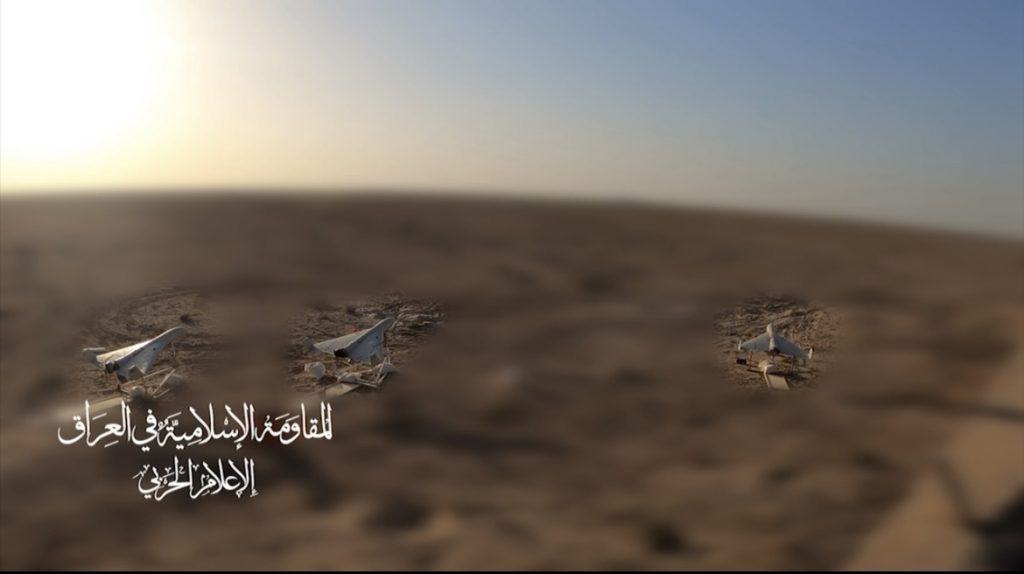
Over the past month, there has been a surge in attacks from Iraq against Israel attributed to the Islamic Resistance. This group consists of several militias backed by Iran, active in both Syria and Iraq, including existing U.S.-designated Foreign Terrorist Organizations such as Kataib Hezbollah, Asaib Ahl al-Haq, Harakat Hezbollah al-Nujaba and Kataib Sayyid al-Shuhada. Since the war in Gaza began on Oct. 7, the group has claimed responsibility for over one hundred attacks on Israeli soil. Moreover, the group has made egregious claims, such as targeting the Ministry of Defense HQ in Tel Aviv, the port of Haifa, and Ashkelon’s oil terminal. However, the validity of many of these claims is doubtful, as they have either not been confirmed by the Israel Defense Forces (IDF) or have not triggered Israel’s Tzeva Adom (Red Color) alert system. In addition, open-source data, including Israeli news outlets and social media, have not corroborated many of these claims. This method of taking responsibility for attacks against Israel with minimal evidence to support the claim has become typical of the Islamic Resistance in Iraq, but this is slowly changing.
The IDF announced on May 27, “Following the sirens that sounded a short while ago in the Eilat area, an IAF fighter jet, in coordination with the IDF Aerial Defense Array, successfully intercepted two hostile aircraft approaching from the east.” Meanwhile, on the same day, the Islamic Resistance claimed on Telegram to have launched three drones and attacked military targets in Eilat, referred to as “Umm Al Rashrash.” However, they only released footage of the drones being launched.
This attack indicates a significant escalation over the past month. According to a tally recorded by FDD, which includes data from IDF statements, Tzeva Adom alerts, and claims by the Islamic Resistance, there have been nine actual attacks targeting Israel in May.
The escalation in attacks by the Islamic Resistance in Iraq likely stems from multiple factors. Israel’s ongoing military operation in Rafah, coupled with increased U.S. pressure culminating in a weapons freeze, appears to have influenced the timing and intensity of these hostilities. The Islamic Resistance began to intensify their attacks on May 7 with two confirmed attacks, one day after Israel announced the evacuation of the eastern outskirts of Rafah and the commencement of operations in the southernmost city of the Gaza Strip. These events may have influenced the Islamic Resistance’s calculus to ramp up its kinetic activity against Israel. Additionally, the uptick in attacks could also be a response to an alleged Israeli airstrike targeting a cultural center and training facilities for Harakat Hezbollah al Nujaba—a prominent organization within the Islamic Resistance in the Sayyida Zaynab suburb of Damascus.
On May 30, Saraya Awliya al-Dam, an Iraqi militia affiliated with Asaib Ahl Al Haq, claimed to have launched drones targeting the port of Haifa. This claim resembles those typically made by the majority of the Islamic Resistance in Iraq regarding attacks on Haifa; and there was no independent confirmation of the attack. Interestingly, this is the first time another group in Iraq has claimed an attack on Israel.
In May, the Islamic Resistance utilized a variety of advanced weaponry, as evidenced by several claimed launch videos. Two videos captured the launch of Iranian-made Shahed 101 drones. Additionally, a video from May 13 highlighted the deployment of a new variant of the KAS-04 drone named Al-Arfad. The group also used the Shahed-136 drone, recognized for its payload capacity, thereby increasing its threat level in targeted attacks.
It is clear that these attacks are likely to continue for the foreseeable future. As Israel grapples with ongoing conflicts in Gaza, confrontations on the border with Lebanon, and continuous threats from the Houthis in Yemen, the prospect of attacks originating from Iraq remains a significant and serious concern. In these complications, U.S. allies have played an important role. Notably, on several occasions since the recent escalation began, Jordan has permitted Israeli Air Force fighter jets to enter its airspace to intercept drones. Video footage from the Jordanian city of Aqaba, adjacent to Eilat, has captured these interceptions three times in the past ten days. This cooperation, along with Jordan’s assistance in intercepting Iranian drones over its airspace on Apr. 13 and despite the domestic challenges Jordan faces due to the war in Gaza, underscores the importance of the defense relationship between the two countries. It also reflects Jordan’s recognition of the threat Iran and its proxies pose to its sovereignty and national security.







